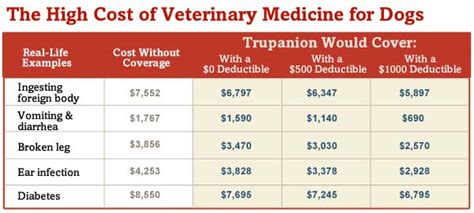Learn how to budget for the initial costs, monthly expenses, and unexpected emergencies of dog ownership. Find out how to save on vet bills and grooming.
Initial Costs of Dog Ownership
The initial costs of dog ownership can be a significant financial commitment that should be carefully considered before bringing a new furry friend into your home. From the purchase or adoption fee to the necessary supplies and equipment, the expenses can add up quickly. It’s important to budget for these initial costs in order to ensure that you are prepared for the financial responsibilities of owning a dog.
One of the first expenses to consider when acquiring a dog is the adoption or purchase fee. Whether you choose to adopt from a shelter or rescue organization or buy from a breeder, there will be an upfront cost associated with obtaining your new pet. This fee can vary widely depending on the source of the dog and its breed, so it’s important to research and budget accordingly.
In addition to the adoption or purchase fee, there are several essential items that you will need to purchase for your new dog. These include a collar and leash, food and water dishes, a bed, and toys. You will also need to invest in grooming supplies, such as brushes and nail clippers, to keep your dog clean and healthy. These initial expenses can add up, so it’s important to factor them into your budget when preparing to bring a new dog into your home.
Finally, it’s important to consider the cost of veterinary care when calculating the initial expenses of dog ownership. In addition to the cost of spaying or neutering, you will need to budget for vaccinations, regular check-ups, and any potential medical issues that may arise. It’s important to prioritize your dog’s health and well-being, so it’s crucial to be prepared for these expenses from the beginning of your dog ownership journey.
Monthly Expenses for Dog Care
Monthly Expenses for Dog Care
Owning a dog requires financial commitment, and one of the most important aspects to consider is the monthly expenses for dog care. From food to grooming and preventive care, it’s essential to budget wisely to ensure the well-being of your furry friend.
Food and Treats: One of the most significant monthly expenses for dog care is the cost of food and treats. Depending on the size and breed of your dog, the monthly cost of food can vary. Additionally, treats are essential for training and rewarding your dog, so it’s important to budget for these as well.
Grooming and Hygiene: Another important aspect of monthly expenses for dog care is grooming and hygiene. This includes regular grooming sessions, bathing, nail trimming, and dental care. These costs can add up, so it’s crucial to factor them into your monthly budget.
Considerations for Vet Costs
When bringing a new furry friend into your home, it’s important to consider the potential vet costs that come with pet ownership. Regular check-ups, vaccinations, and unexpected illness or injury can all add up, so it’s crucial to budget wisely for these expenses.
One of the first things to consider is the initial cost of spaying or neutering your dog, if it hasn’t already been done by the breeder or shelter. This is a one-time expense, but it’s important to factor in when calculating the overall cost of vet care for your pet.
Additionally, it’s important to research and compare the costs of different veterinary clinics in your area. Some clinics may offer discounted packages for routine care, while others may have higher fees but more comprehensive services. By being proactive and doing your research, you can potentially save money on vet costs without compromising the quality of care for your dog.
Budgeting for Food and Treats
Calculating the True Costs of Dog Care to Budget Wisely
When it comes to budgeting for food and treats for your dog, it’s important to take into account their nutritional needs as well as any special dietary requirements. Dogs require a balanced diet that includes protein, carbohydrates, healthy fats, vitamins, and minerals. It’s also important to consider their size, age, and activity level when choosing the right food for them.
One way to ensure you are budgeting effectively is to research different dog food brands and compare their prices, while also considering the quality of the ingredients. You may also want to explore options for buying in bulk or signing up for auto-delivery services to save on regular food expenses. Additionally, setting aside a specific portion of your monthly budget for dog treats can help you manage and monitor this expense.
Another important aspect of budgeting for food and treats is accounting for any potential health issues that may arise, leading to the need for a specialized diet or prescription food. By planning for these possibilities in advance, you can be better prepared to cover the related costs without impacting your overall financial plan.
Savings for Grooming and Hygiene
One of the important aspects of being a responsible dog owner is ensuring that your pet is clean and well-groomed. Grooming and hygiene play a crucial role in maintaining your dog’s overall health and well-being. However, the costs of professional grooming services can add up over time, which is why it’s essential to find ways to save on grooming expenses while still keeping your dog clean and healthy.
Investing in some basic grooming tools and learning to groom your dog at home can help you save a significant amount of money in the long run. By regularly brushing your dog’s coat, trimming their nails, and cleaning their ears and teeth, you can reduce the frequency of professional grooming appointments, leading to substantial savings over time.
Another way to save on grooming and hygiene expenses is to take advantage of discounts and promotions offered by local pet stores and grooming salons. Many businesses often run special deals and sales on grooming products and services, so it’s worth keeping an eye out for these opportunities to save money while still providing the best care for your furry friend.
Unexpected Medical Emergencies
As a responsible pet owner, it’s important to budget for unexpected medical emergencies when considering the true costs of dog care. Dogs, similar to humans, can experience sudden health issues that may require immediate medical attention. This can include anything from a sudden injury to an unexpected illness. Regardless of the nature of the emergency, it’s essential to be financially prepared for such situations.
In order to budget wisely for unexpected medical emergencies, it’s advisable to set aside a specific amount of savings each month specifically for potential medical expenses. This can serve as a safety net for any unforeseen health issues that may arise. Furthermore, it’s crucial to have a clear understanding of the potential costs associated with emergency vet visits, diagnostic tests, medications, and potential overnight stays at the veterinary clinic.
Another important consideration is investing in pet insurance to help offset the financial burden of unexpected medical emergencies. Pet insurance can provide coverage for a range of health issues, including accidents, illnesses, and even chronic conditions. By having a comprehensive insurance plan in place, pet owners can have peace of mind knowing that their beloved furry friend can receive the necessary medical care without causing a significant strain on their finances.
Total Cost of Dog Ownership
Owning a dog can bring immeasurable joy and companionship to your life, but it’s important to be aware of the total cost of dog ownership before bringing a furry friend into your home. From the initial costs of purchasing or adopting a dog to the monthly expenses for food, grooming, and healthcare, there are a variety of financial considerations to take into account.
In addition to the basic necessities, it’s important to budget for veterinary care, including routine check-ups, vaccinations, and potential emergency medical expenses. Grooming and hygiene are also ongoing costs to consider, including regular grooming appointments, bathing supplies, and grooming tools for at-home care.
While some costs of dog ownership may be predictable, it’s crucial to prepare for unexpected medical emergencies that could arise. Setting aside a small amount each month specifically for a pet emergency fund can provide peace of mind and financial security in the event of an unforeseen health issue or accident.
Frequently Asked Questions
What are the initial costs of getting a dog?
The initial costs of getting a dog include adoption fees, spaying or neutering, vaccinations, and a collar and leash.
What are the ongoing costs of dog ownership?
The ongoing costs of dog ownership include food, grooming, toys, treats, and regular vet check-ups.
How much does dog food cost per month?
The cost of dog food can vary depending on the brand and type, but on average, it can range from $20 to $60 per month.
What are some unexpected costs of owning a dog?
Unexpected costs of owning a dog can include emergency vet visits, medication, grooming supplies, and boarding or pet sitting fees.
How can I budget for dog care expenses?
You can budget for dog care expenses by setting aside a specific amount of money each month for pet-related costs and considering purchasing pet insurance.
What are some ways to save money on dog care?
You can save money on dog care by grooming your dog at home, buying pet supplies in bulk, and taking advantage of discounts on vaccinations and vet services.
Is owning a dog worth the cost?
Owning a dog can provide companionship, love, and joy, but it’s important to carefully consider the financial responsibilities and make sure you’re prepared for the costs before getting a dog.





